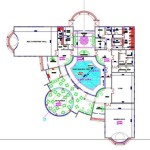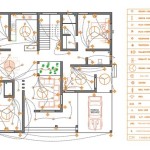Essential Aspects of House Design and Floor Plans
Designing a house involves meticulous consideration of numerous factors to create a functional, comfortable, and aesthetically pleasing living space. The design process encompasses both exterior and interior elements, including floor plans, room layouts, and architectural features. Understanding the key aspects of house design and floor plans is crucial for achieving a home that aligns with your lifestyle and aspirations.
Exterior Design
The exterior design sets the tone for your home and conveys its character. It encompasses the overall shape, roofline, siding materials, windows, and doors. Consider the architectural style you prefer and how it complements the surrounding environment. Choose materials that are durable, aesthetically appealing, and appropriate for your climate. The exterior design should not only enhance the visual appeal but also provide functionality, such as maximizing natural light and creating outdoor living spaces.
Interior Layout
The interior layout is equally important in creating a comfortable and functional home. Floor plans determine the flow of movement, the placement of rooms, and the overall organization of the space. Open floor plans offer a spacious and airy feel, while more traditional layouts provide greater privacy. Consider your lifestyle and daily routines when designing the layout. Ensure that there is enough space for each room's intended purpose, and that the traffic flow is efficient and convenient.
Room Sizes and Proportions
The size and proportions of rooms significantly impact their functionality and ambience. Larger rooms provide more versatility and can accommodate multiple activities, while smaller rooms can create a cozy and intimate atmosphere. Consider the purpose of each room and the furniture it will accommodate. Ensure proper proportions and balance to avoid feeling cramped or overwhelmed in any space.
Natural Lighting
Natural lighting plays a crucial role in the health, well-being, and energy efficiency of a home. Large windows and skylights allow sunlight to penetrate deep into the house, reducing the need for artificial lighting. Consider the orientation of your home and the placement of windows to maximize natural light while minimizing glare. Natural lighting not only brightens spaces but also enhances mood and creates a sense of connection to the outdoors.
Ventilation and Airflow
Proper ventilation ensures a healthy indoor environment by allowing fresh air to circulate throughout the house. Cross-ventilation, achieved by placing windows on opposite sides of a room, promotes airflow and helps regulate temperature. Consider using mechanical ventilation systems, such as fans and air conditioners, to supplement natural ventilation, especially in areas with limited air movement.
Storage Solutions
Adequate storage is essential for maintaining an organized and clutter-free home. Built-in cabinets, closets, and shelves provide ample space for storing belongings, freeing up living areas. Plan for storage needs in all rooms, including kitchens, bathrooms, bedrooms, and outdoor spaces. Consider the size and type of items you need to store and design storage solutions accordingly.
Accessibility
Creating an accessible home is important for individuals with disabilities or mobility challenges. Ensure that doorways are wide enough, hallways are clear of obstacles, and bathrooms are equipped with accessible features such as grab bars and roll-in showers. Consider adding ramps or elevators to provide access to different levels of the house. Accessibility enhancements not only improve the quality of life for those with disabilities but also provide convenience and safety for all residents.
Conclusion
Designing a house is a complex process that requires careful consideration of numerous factors. By understanding the essential aspects of house design and floor plans, you can create a home that is both functional and aesthetically pleasing. Whether you are building a new home or renovating an existing one, it is important to consult with professionals such as architects, interior designers, and contractors to ensure that your vision is realized and that your home meets your specific needs and preferences.

House Plans How To Design Your Home Plan

Floor Plans Types Symbols Examples

Small House Design 2024005 Pinoy Eplans Modern Plans Layout

Small House Design Shd 2024007 Pinoy Eplans One Y Bungalow Plans Layout

House Floor Plans Your Best Guide To Home Layout Ideas

Top 5 Modern House Plans With Photos Floor Archid

Small House Designs Shd 2024003 Pinoy Eplans

Modern House Design Floor Plans And Designs

Design Your Own Home House Designing Homes

House Plans How To Design Your Home Plan








